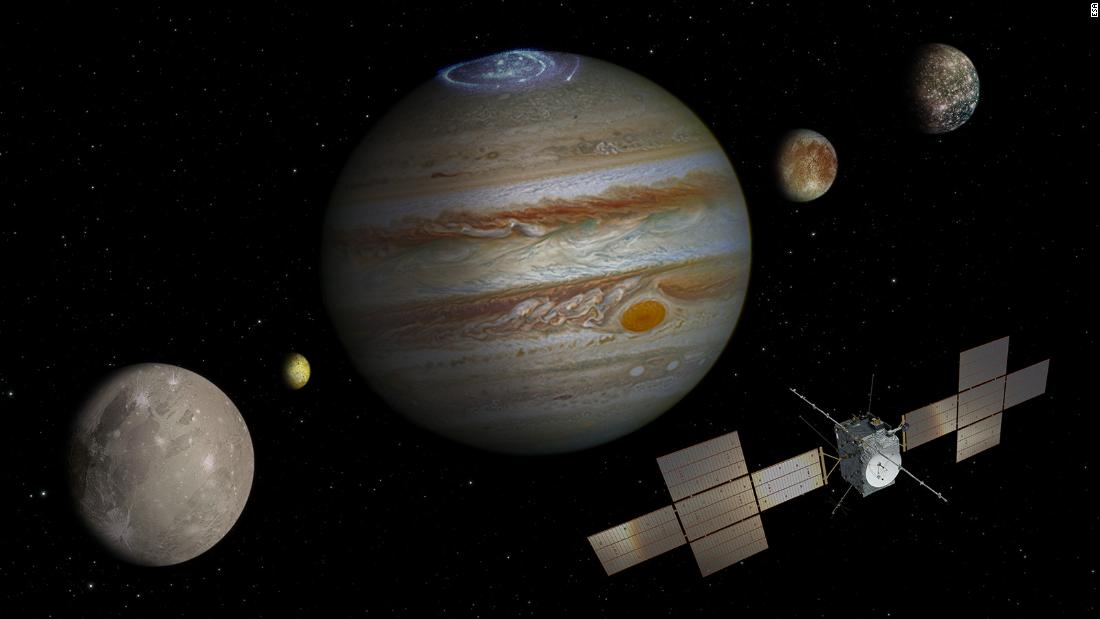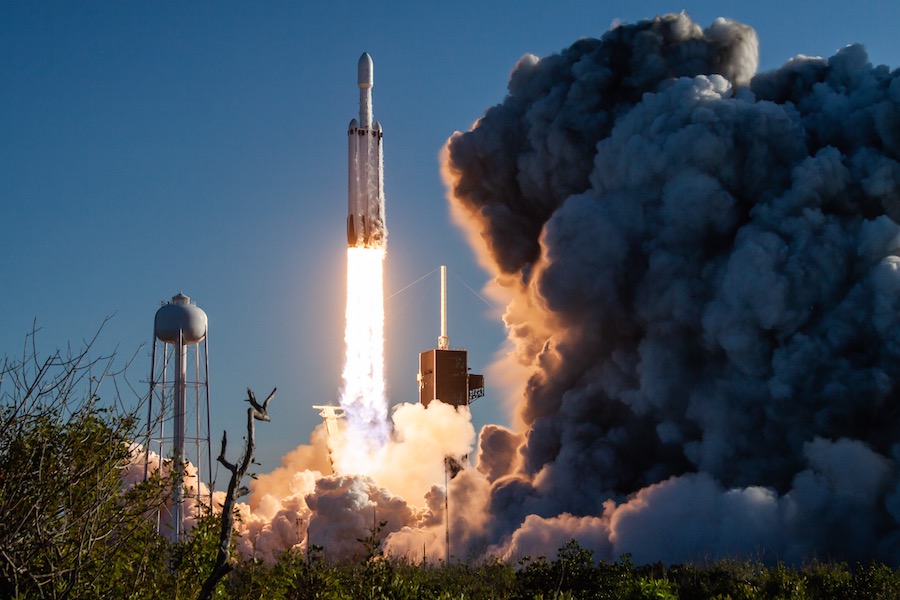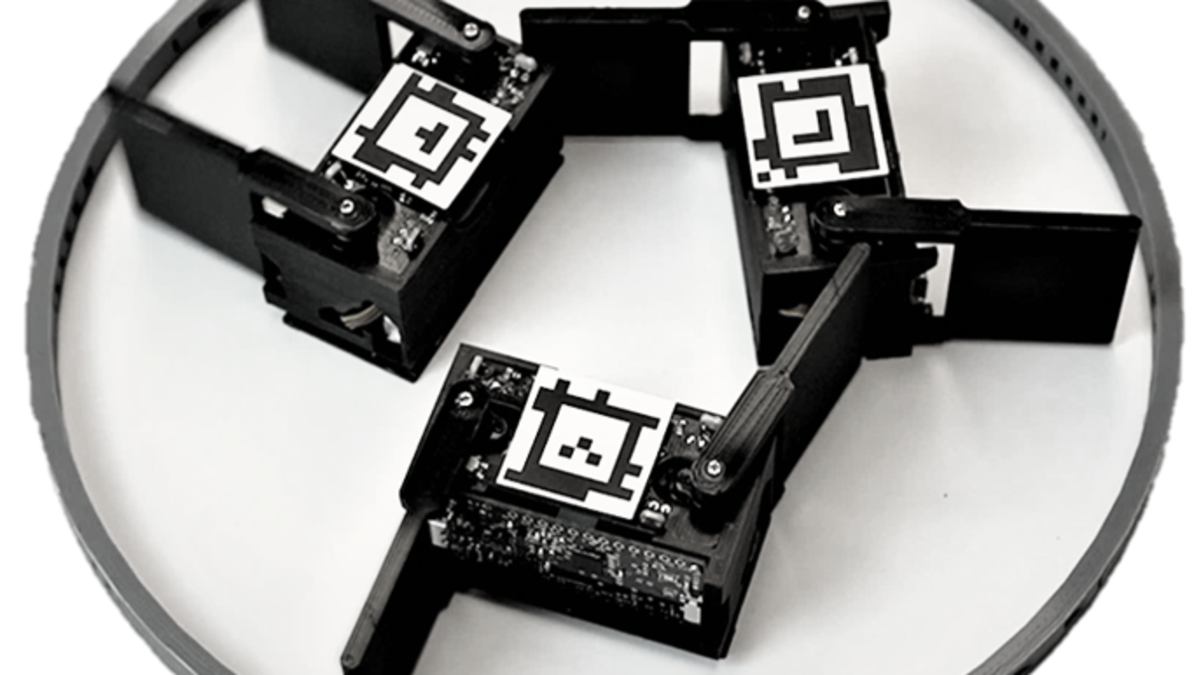최근 연구에 따르면 지구 생명체의 기본 구성 요소는 태양 폭발에서 비롯되었을 수 있습니다. 이 연구는 지구의 원시 대기에서 태양 분자와 가스의 충돌이 단백질과 유기 생명체의 구성 요소인 아미노산과 카르복실산을 생성할 수 있음을 보여주었습니다. 연구원들은 NASA의 케플러 임무 데이터를 사용하여 초기 슈퍼플레어 단계에서 태양의 에너지 입자가 정기적으로 대기와 상호 작용하여 근본적인 화학 반응을 일으킬 것이라고 제안했습니다. 반복 실험을 통해 태양의 분자가 번개보다 아미노산과 카르복시산의 합성에 더 효율적인 에너지원인 것으로 나타났습니다. 크레딧: NASA/고다드 우주 비행 센터
새로운 연구는 지구 생명체의 첫 번째 빌딩 블록, 즉[{” attribute=””>amino acids and carboxylic acids, may have been formed due to solar eruptions. The research suggests that energetic particles from the sun during its early stages, colliding with Earth’s primitive atmosphere, could have efficiently catalyzed essential chemical reactions, thus challenging the traditional “warm little pond” theory.
The first building blocks of life on Earth may have formed thanks to eruptions from our Sun, a new study finds.
A series of chemical experiments show how solar particles, colliding with gases in Earth’s early atmosphere, can form amino acids and carboxylic acids, the basic building blocks of proteins and organic life. The findings were published in the journal Life.
To understand the origins of life, many scientists try to explain how amino acids, the raw materials from which proteins and all cellular life, were formed. The best-known proposal originated in the late 1800s as scientists speculated that life might have begun in a “warm little pond”: A soup of chemicals, energized by lightning, heat, and other energy sources, that could mix together in concentrated amounts to form organic molecules.

Artist’s concept of Early Earth. Credit: NASA
In 1953, Stanley Miller of the University of Chicago tried to recreate these primordial conditions in the lab. Miller filled a closed chamber with methane, ammonia, water, and molecular hydrogen – gases thought to be prevalent in Earth’s early atmosphere – and repeatedly ignited an electrical spark to simulate lightning. A week later, Miller and his graduate advisor Harold Urey analyzed the chamber’s contents and found that 20 different amino acids had formed.
“That was a big revelation,” said Vladimir Airapetian, a stellar astrophysicist at NASA’s Goddard Space Flight Center in Greenbelt, Maryland, and coauthor of the new paper. “From the basic components of early Earth’s atmosphere, you can synthesize these complex organic molecules.”
But the last 70 years have complicated this interpretation. Scientists now believe ammonia (NH3) and methane (CH4) were far less abundant; instead, Earth’s air was filled with carbon dioxide (CO2) and molecular nitrogen (N2), which require more energy to break down. These gases can still yield amino acids, but in greatly reduced quantities.
Seeking alternative energy sources, some scientists pointed to shockwaves from incoming meteors. Others cited solar ultraviolet radiation. Airapetian, using data from NASA’s Kepler mission, pointed to a new idea: energetic particles from our Sun.
Kepler observed far-off stars at different stages in their lifecycle, but its data provides hints about our Sun’s past. In 2016, Airapetian published a study suggesting that during Earth’s first 100 million years, the Sun was about 30% dimmer. But solar “superflares” – powerful eruptions we only see once every 100 years or so today – would have erupted once every 3-10 days. These superflares launch near-light speed particles that would regularly collide with our atmosphere, kickstarting chemical reactions.
40억년 전 어린 태양으로부터 얻은 에너지는 지구 대기에 분자를 생성하여 생명체가 거주할 수 있을 만큼 가열되도록 했습니다. 출처: NASA의 고다드 우주 비행 센터/Jenna Duberstein
Airapetian은 “그 논문을 발표하자마자 요코하마 국립 대학의 한 팀이 일본에서 저에게 연락했습니다.”라고 말했습니다.
그곳의 화학 교수인 Dr. Kobayashi는 지난 30년 동안 프리바이오틱스의 화학을 연구했습니다. 그는 우리 태양계 외부에서 온 입자인 은하 우주선이 초기 지구의 대기에 어떻게 영향을 미쳤을 수 있는지 이해하려고 노력했습니다. “은하 우주선은 입자 가속기와 같은 특수 장비가 필요하기 때문에 대부분의 연구자들에 의해 무시됩니다.”라고 Kobayashi는 말했습니다. “운 좋게도 우리 시설 근처에서 여러 개를 접할 수 있었습니다.” Kobayashi의 실험 설정을 약간 수정하면 Airapetian의 아이디어를 테스트할 수 있습니다.
Airapetian과 Kobayashi, 그리고 그들의 협력자들은 오늘날 우리가 이해하는 초기 지구 대기에 해당하는 가스 혼합물을 생성했습니다. 그들은 이산화탄소, 분자 질소, 물, 다양한 양의 메탄을 수집했습니다. (초기 지구 대기의 메탄 비율은 불확실하지만 낮은 것으로 생각됩니다.) 그들은 가스 혼합물을 양성자로 쏘거나(태양 입자를 시뮬레이션) 스파크 방전(번개를 시뮬레이션)으로 점화하여 Miller-Urey 실험을 반복했습니다. 비교.
메탄 함량이 0.5%보다 크면 양성자(태양 에너지 입자)가 방출하는 혼합물에서 검출 가능한 양의 아미노산과 카르복실산이 생성됩니다. 그러나 스파크(번개) 방전에는 아미노산이 형성되기 전에 약 15%의 메탄 농도가 필요합니다.
“15%의 메탄이 존재하더라도 번개에 의한 아미노산 생산 속도는 양성자 생산보다 백만 배 더 낮습니다.”라고 Airapetian은 덧붙였습니다. 양성자는 또한 스파크 방전에 의해 점화된 것보다 더 많은 카르복실산(아미노산 조달자)을 생성하는 경향이 있습니다.
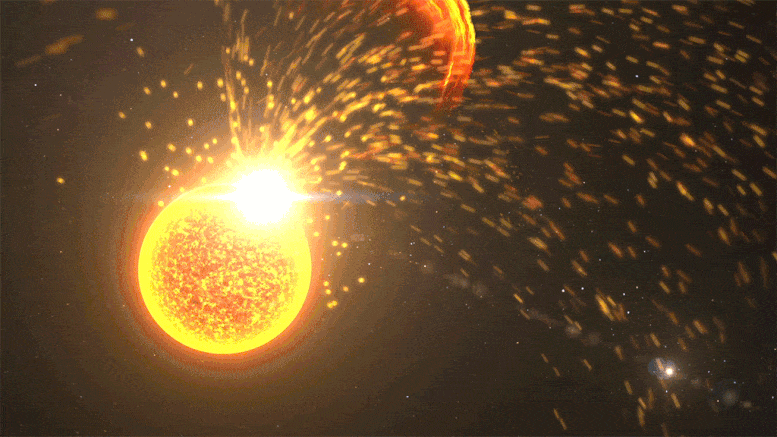
태양 플레어, 코로나 물질 분출, 태양 물질 분출 사건을 포함한 태양 화산 폭발의 클로즈업. 크레딧: NASA의 고다드 우주 비행 센터
다른 모든 것이 같다면 태양 입자는 번개보다 더 효율적인 에너지원인 것 같습니다. 다른 모든 것은 아마도 동등하지 않았을 것이라고 Airapetian은 제안했습니다. Miller와 Urey는 번개가 오늘날처럼 “따뜻한 작은 연못” 시대에도 흔했다는 가설을 세웠습니다. 그러나 상승하는 따뜻한 공기에서 형성된 뇌운에서 발생하는 번개는 희미한 햇빛 아래에서 약 30% 더 드물었을 것입니다.
“추운 날씨에는 번개가 치는 일이 없었고, 초기 지구는 아주 희미한 태양 아래 있었습니다.”라고 Airapetian은 말했습니다. “그것이 번개에서 나올 수 없다는 것을 의미하지는 않지만 지금은 번개가 덜 가능성이 있고 태양 입자가 더 가능성이 있는 것 같습니다.”
이 실험은 우리의 젊고 활기찬 태양이 이전에 가정했던 것보다 더 쉽게 그리고 아마도 더 일찍 생명의 전구체를 유도할 수 있었음을 시사합니다.
참조: “젊은 태양의 태양 입자에 의한 행성 대기의 약한 환원에서 아미노산 및 카르복실산의 형성” Kensei Kobayashi Jun-ichi Ise, Ryuhei Aoki, Mei Kinoshita, Koki Naito, Takumi Udo, Bhagawati Konivore Takahashi, Hiromi 시바타, 미타 하지메, 후쿠다 히토시, 오구리 요시유키 가와무라 키미타카, 키부카와 요코, 블라디미르 S. Irpetian, 2023년 4월 28일 여기에서 볼 수 있습니다. 삶.
DOI: 10.3390/life13051103

“요은 베이컨과 알코올에 대한 전문 지식을 가진 닌자입니다. 그의 탐험적인 성격은 다양한 경험을 통해 대중 문화에 대한 깊은 애정과 지식을 얻게 해주었습니다. 그는 자랑스러운 탐험가로서, 새로운 문화와 경험을 적극적으로 탐구하며, 대중 문화에 대한 그의 열정은 그의 작품 속에서도 느낄 수 있습니다.”
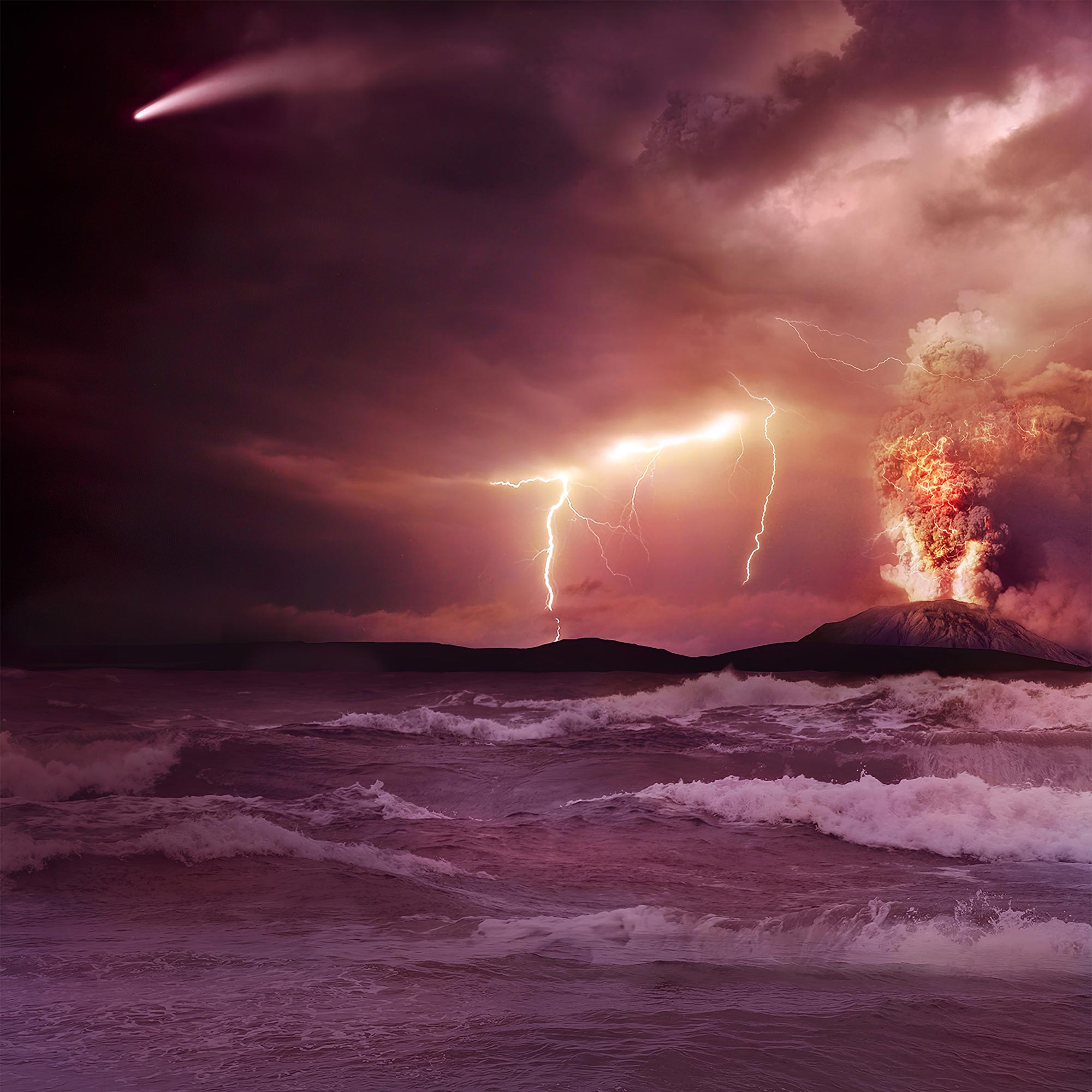
/cloudfront-us-east-2.images.arcpublishing.com/reuters/AQXJ2QDV5ZKSFL2OJSUOXDSLCU.jpg)
